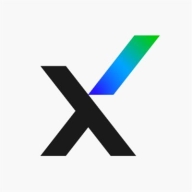

Trellix Helix Connect and Wazuh are competitors in the cybersecurity market. Trellix Helix Connect leads with strong integration and analytics, while Wazuh excels in flexibility and open-source capabilities.
Features: Trellix Helix Connect is notable for its robust integration capabilities with over 400 connectors, advanced AI for real-time threat analytics, and automated response tools. It offers quick implementation and integration with Mandiant. Wazuh provides comprehensive SIEM, excellent log monitoring, and compliance features including PCI DSS. It offers flexibility with cloud and on-prem applications, and is easy to integrate with other solutions.
Room for Improvement: Trellix Helix Connect could enhance its customization options and provide more tools for non-U.S. markets. Improvements in false positive handling would also add value. Additionally, it might need user-friendly enhancements in its automation capabilities. Wazuh could improve in terms of reducing technical expertise requirements for setup and deployment. Enhancements in UX, specifically for ANZ compliance standards, are needed. Better structured customer support to complement community-driven assistance would benefit users.
Ease of Deployment and Customer Service: Trellix Helix Connect excels in providing a streamlined setup process with reliable vendor support for efficient deployment and troubleshooting. Wazuh offers flexibility in deployment due to its open-source nature, allowing tailored configurations, but may require greater technical expertise and relies on community support, which can vary in effectiveness.
Pricing and ROI: Trellix Helix Connect involves higher upfront costs but offers significant ROI through efficient threat management and time-saving features. Wazuh, being open-source, generally has a lower total cost of ownership and offers a cost-effective initial setup, appealing to budget-conscious organizations.
I have seen value in security cost savings with Wazuh, as using proprietary EDR versions could save us substantial money.
We experienced some challenges due to the ongoing transformation and fusion of McAfee and FireEye, but we are committed to improving response times.
They responded quickly, which was crucial as I was on a time constraint.
There is no dedicated technical support for Wazuh as it is open source.
The documentation is good and provides clear instructions, though it's targeted at those with technical backgrounds.
We support the largest companies in the world and can cater to large environments.
It can accommodate thousands of endpoints on one instance, and multiple instances can run for different clients.
Currently, I don't see any limitations in terms of scalability as Wazuh can still connect many endpoints.
Scalability depends on the configuration and the infrastructure resources like compute and memory we allocate.
The availability is high, which is critical for our customers who rely on a single panel of glass to operate.
The indexer frequently times out, requiring system restarts.
The stability of Wazuh is largely dependent on maintenance.
The stability of Wazuh is strong, with no issues stemming from the solution itself.
We have just released the solutions to the market recently, making it a revolution in the cybersecurity sector.
Machine learning is needed along with understanding user behavior and behavioral patterns.
Wazuh could improve by creating videos on YouTube covering installation, use cases, and integration of third-party APIs for different scenarios that other SAAS services provide.
I think Wazuh should improve by introducing AI functionalities, as it would be beneficial to see AI incorporated in the threat hunting and detection functionalities.
It is not the cheapest, but also not the most expensive solution.
Wazuh is completely free of charge.
I would definitely recommend Wazuh, especially considering Fortinet's licensing model which is confusing and overpriced in my opinion.
Wazuh is free to use, but there are licensing fees for third parties.
Trellix Helix, as an AI XDR platform, helps our organization by offering an extensive number of connectors for integration, enabling us to consolidate all information in a single dashboard.
The fact that it is open source means it is always being expanded, which is beneficial for customizing solutions for individual client requests.
With this open source tool, organizations can establish their own customized setup.
The system allows us to monitor endpoints effectively and collect security data that can be utilized across other platforms such as SOAR.
| Product | Market Share (%) |
|---|---|
| Wazuh | 10.2% |
| Trellix Helix Connect | 0.7% |
| Other | 89.1% |


| Company Size | Count |
|---|---|
| Small Business | 4 |
| Midsize Enterprise | 1 |
| Large Enterprise | 7 |
| Company Size | Count |
|---|---|
| Small Business | 26 |
| Midsize Enterprise | 15 |
| Large Enterprise | 8 |
Trellix Helix Connect is known for its seamless API integration, automation capabilities, and efficient data correlation. It offers robust solutions in email threat prevention and malware detection, catering to cybersecurity needs with a user-friendly query language and extensive connector support.
Trellix Helix Connect integrates incident response, centralized SIEM tasks, and data correlation using native support for FireEye products. It rapidly handles alerts, enhances ticket management, and prevents network attacks. Its XDR platform supports a wide range of environments, providing DDI and IOC feeds for comprehensive data, email, and endpoint security. Users appreciate the deployment and API integration, but improvements in graphical interface and pricing could increase satisfaction. Additional infrastructure enhancements and optimized support can address current challenges resulting from recent mergers.
What are the key features of Trellix Helix Connect?Enterprises utilize Trellix Helix Connect for its ability to manage managed detection and response services, logging, and ransomware/ phishing mitigation. It operates efficiently in restrictive environments, enabling cybersecurity functions in industries requiring robust data, email, and endpoint security strategies.
Wazuh offers comprehensive security features like MITRE ATT&CK correlation, log monitoring, and cloud-native infrastructure. It ensures compliance and provides intrusion detection with high scalability and open-source flexibility, ideal for businesses seeking robust SIEM capabilities.
Wazuh stands out in security information and event management by providing efficient log aggregation, vulnerability scanning, and event correlation against MITRE ATT&CK. Its capability to integrate seamlessly with environments, manage compliance, and monitor files makes it suitable for cloud-native infrastructures and financial sectors. Despite its technical support needing enhancement and opportunities for improving AI integration and threat intelligence, its open-source nature and cost-effectiveness make it appealing. Users can leverage custom dashboards powered by Elasticsearch for precise data analysis, even though there is a desire for a more user-friendly interface and better enterprise solution integration. Deployment may be complex, but its features contribute significantly to fortified security postures.
What are the essential features of Wazuh?Industries like finance and cloud infrastructure heavily utilize Wazuh for its security strengths. By monitoring endpoints and ensuring compliance with frameworks, companies can improve security posture and swiftly detect anomalies. The platform's focus on event correlation and alerts for security incidents is particularly beneficial.
We monitor all Security Information and Event Management (SIEM) reviews to prevent fraudulent reviews and keep review quality high. We do not post reviews by company employees or direct competitors. We validate each review for authenticity via cross-reference with LinkedIn, and personal follow-up with the reviewer when necessary.